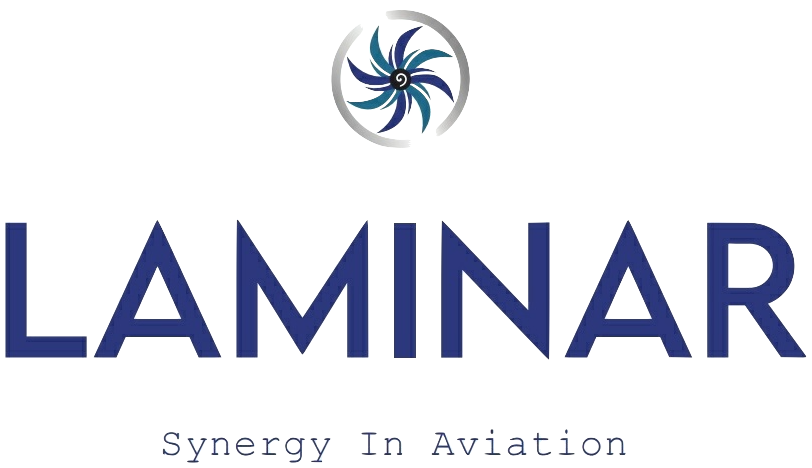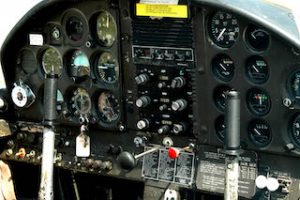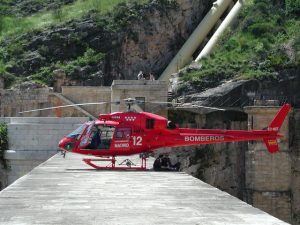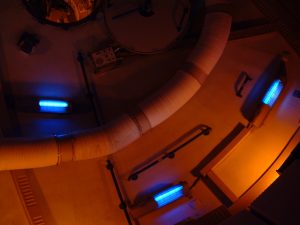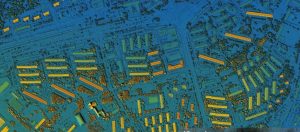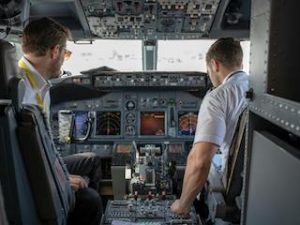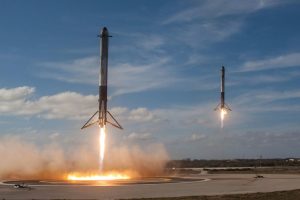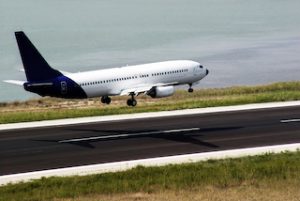Transitioning From Smaller Propeller-Driven Aircraft To Jet-Powered Planes
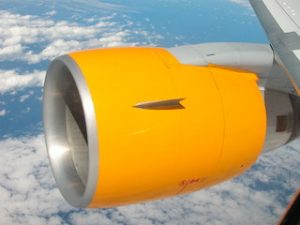 Flying an aircraft is a complex and demanding task that requires a deep understanding of aerodynamics, systems, and procedures. Pilots often start their careers flying smaller, propeller-driven aircraft and, as they gain experience, transition to jet-powered planes. This transition involves significant changes in how aircraft are operated, handled, and maintained. This article explores the key differences between propeller-driven aircraft and jet-powered planes, highlighting the technical, operational, and performance aspects that pilots need to understand.
Flying an aircraft is a complex and demanding task that requires a deep understanding of aerodynamics, systems, and procedures. Pilots often start their careers flying smaller, propeller-driven aircraft and, as they gain experience, transition to jet-powered planes. This transition involves significant changes in how aircraft are operated, handled, and maintained. This article explores the key differences between propeller-driven aircraft and jet-powered planes, highlighting the technical, operational, and performance aspects that pilots need to understand.
Propeller-driven aircraft
Propeller-driven aircraft, commonly referred to as piston or turboprop aircraft, are typically smaller and slower than jet-powered planes. They are often used for general aviation, flight training, and short regional flights. These aircraft are powered by piston engines or turboprop engines, which drive a propeller to generate thrust.
Characteristics of propeller-driven aircraft
1) Engine types
-
- Piston engines: These are similar to car engines and use a reciprocating motion to turn the propeller. They are typically found in smaller, light aircraft used for training and private flying.
- Turboprop engines: These combine a turbine engine with a propeller, providing more power and efficiency. Turboprops are often used in regional and commuter aircraft.
2) Speed and altitude
-
- Propeller-driven aircraft generally fly at lower speeds and altitudes compared to jets. They are typically used for flights under 300 knots and below 25,000 feet.
3) Fuel efficiency
-
- These aircraft are more fuel-efficient at lower speeds and altitudes, making them ideal for short to medium-range flights.
4) Operational costs
-
- Lower operational costs make propeller-driven aircraft a cost-effective choice for flight training, regional transport, and private use.
Transition to jet-powered planes
Jet-powered planes, including turbojets and turbofans, represent a significant step up in performance, complexity, and operational capability. Jets are designed for higher speeds, greater altitudes, and longer distances, making them the preferred choice for commercial aviation, business travel, and military operations.
Characteristics of jet-powered planes
1) Engine types
-
- Turbojet engines: These engines produce thrust by expelling exhaust gases at high speed. They are efficient at high speeds and altitudes, making them suitable for supersonic jets and some military aircraft.
- Turbofan engines: The most common type in commercial aviation, turbofans combine the efficiency of a turbine engine with a bypass fan to produce additional thrust. They offer a balance of speed, fuel efficiency, and noise reduction.
2) Speed and altitude
-
- Jets are capable of flying at speeds exceeding 500 knots and altitudes above 30,000 feet. This allows for faster travel times and the ability to fly above most weather systems and air traffic.
3) Performance
-
- Jet engines provide greater thrust and power, enabling larger payloads, longer ranges, and higher speeds. This makes jets ideal for long-haul flights and high-capacity transport.
4) Operational costs
-
- While jets have higher operational costs, including fuel consumption and maintenance, their ability to cover longer distances quickly and efficiently justifies the investment for commercial and business aviation.
Differences between propeller-driven and jet-powered aircraft
1) Aerodynamics and performance
-
-
Propeller-driven aircraft
-
Thrust production: Propeller-driven aircraft produce thrust through the rotation of propellers, which create a difference in air pressure. This method is more efficient at lower speeds and altitudes.
Aerodynamic limitations: Propellers have a limit on the speed they can efficiently operate due to issues like blade drag and compressibility effects at higher speeds.
-
-
Jet-powered planes
-
Thrust production: Jet engines generate thrust by expelling exhaust gases at high velocities, allowing for greater speeds and altitudes.
High-speed aerodynamics: Jets are designed to minimise drag and maximise efficiency at high speeds, incorporating features like swept wings and advanced materials.
2) Handling and Control
-
-
Propeller-driven aircraft
-
Flight controls: These aircraft typically have simpler control systems and require more manual inputs from the pilot. They are often more forgiving and easier to handle at lower speeds.
Maneuverability: Propeller aircraft are generally more maneuverable at low speeds, making them ideal for training and short-distance flights.
-
-
Jet-powered planes
-
Flight controls: Jets use more advanced control systems, including fly-by-wire technology, which provides greater precision and automation.
Handling at high speeds: Jets require different handling techniques, particularly at high speeds and altitudes where aerodynamic forces are more pronounced. Pilots must adjust to higher approach and landing speeds.
3) Operational procedures
-
-
Propeller-driven aircraft
-
Pre-flight checks: While comprehensive, these checks are generally less complex compared to jets.
Takeoff and landing: Procedures are typically shorter and simpler, with lower speeds and less runway required.
-
-
Jet-powered planes
-
Pre-flight checks: Involve more detailed and stringent procedures, reflecting the complexity of jet systems.
Takeoff and landing: Jets require longer runways and more detailed procedures, including managing higher speeds and ensuring proper configuration of flaps, slats, and landing gear.
4) Maintenance and costs
-
-
Propeller-driven aircraft
-
Maintenance requirements: Generally simpler and less costly, with fewer systems to manage.
Operational costs: Lower fuel consumption and maintenance costs make propeller-driven aircraft more economical for short flights and training.
-
-
Jet-powered planes
-
Maintenance requirements: More complex, with stringent requirements for engine inspections, avionics, and airframe integrity.
Operational costs: Higher fuel consumption and maintenance costs, but offset by the ability to transport more passengers and cover longer distances efficiently.
5) Training and certification
-
-
Propeller-driven aircraft
-
Initial training: Pilots typically begin their training on propeller-driven aircraft, learning the basics of flight, navigation, and aircraft systems.
Licensing: Obtaining a private pilot license (PPL) or commercial pilot license (CPL) often involves training on these aircraft.
-
-
Jet-powered planes
-
Advanced training: Transitioning to jets requires additional training, such as the Jet Orientation Course (JOC) and type rating for specific aircraft.
Certification: Pilots must undergo rigorous training and certification processes to operate jet-powered planes, including simulator sessions and check rides.
Economic and operational considerations
Fuel efficiency and environmental impact
-
-
Propeller-driven aircraft
-
Fuel efficiency: More efficient at lower speeds and altitudes, making them suitable for short-haul flights.
Environmental impact: Generally have a smaller carbon footprint due to lower fuel consumption.
-
-
Jet-powered planes
-
Fuel efficiency: Optimised for high-speed, long-distance travel. While they consume more fuel, their efficiency at cruising altitudes offsets some of the higher consumption.
Environmental impact: Higher emissions per flight, but advancements in engine technology and aerodynamic design continue to improve their environmental footprint.
Market and use cases
-
-
Propeller-driven aircraft
-
Market segment: Primarily used for general aviation, flight training, regional transport, and cargo operations.
Use cases: Ideal for short-haul routes, rural connectivity, and applications requiring low operating costs.
-
-
Jet-powered planes
-
Market segment: Dominant in commercial aviation, business travel, and military operations.
Use cases: Best suited for long-haul flights, high-capacity transport, and scenarios requiring rapid and efficient travel.
Conclusion
The transition from smaller, propeller-driven aircraft to jet-powered planes marks a significant milestone in a pilot’s career. Understanding the key differences in aerodynamics, performance, handling, operational procedures, maintenance, and economic considerations is crucial for pilots and operators alike.
Propeller-driven aircraft offer cost-effective solutions for short-haul flights and training, providing the foundational skills necessary for aspiring pilots. On the other hand, jet-powered planes represent the pinnacle of aviation technology, delivering unmatched speed, efficiency, and performance for commercial and long-distance travel.
Both types of aircraft play essential roles in the aviation ecosystem, each suited to specific missions and market needs. As pilots progress in their careers, mastering the unique characteristics and requirements of both propeller-driven and jet-powered aircraft is essential for achieving proficiency and success in the dynamic and challenging world of aviation.
